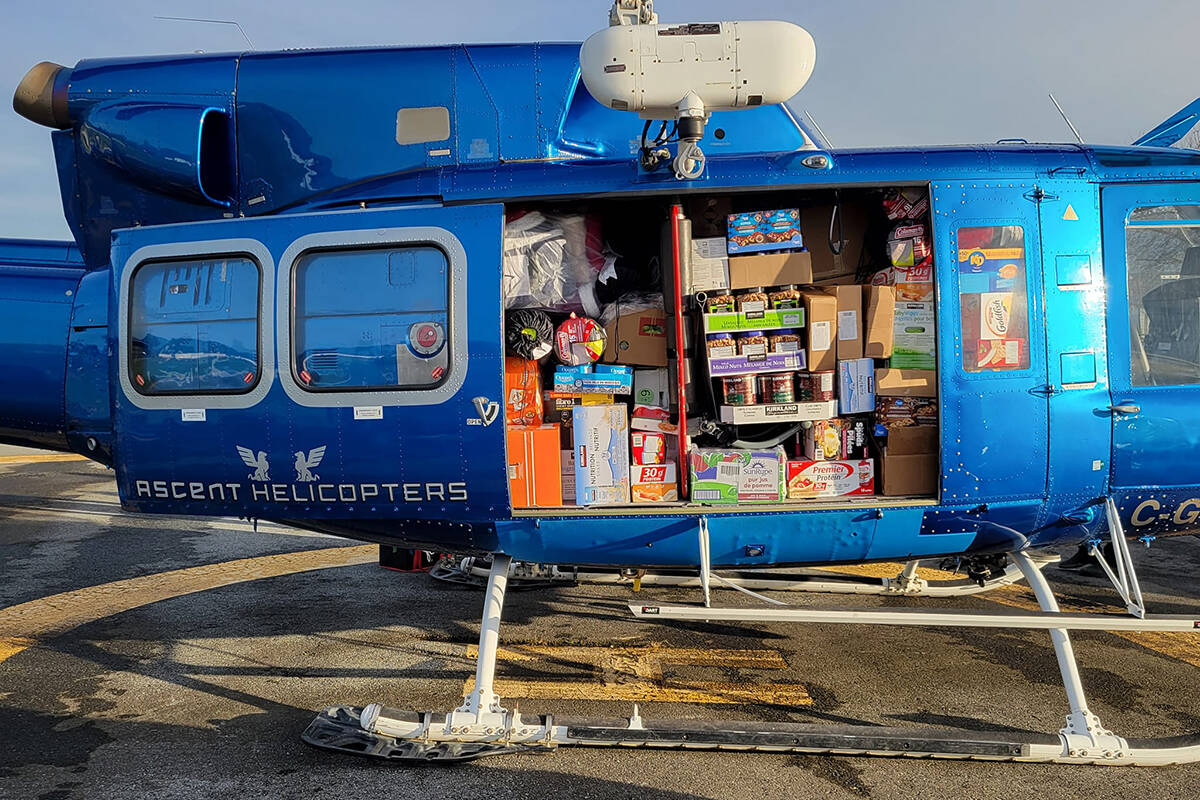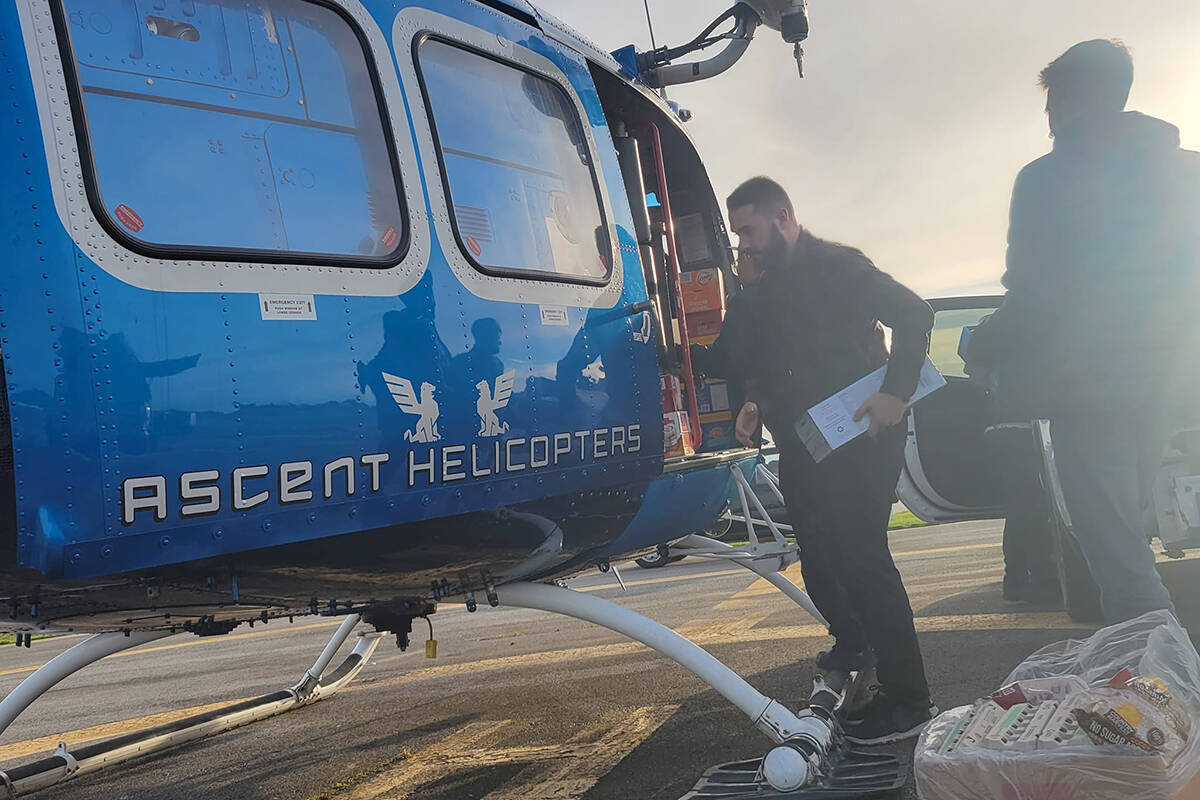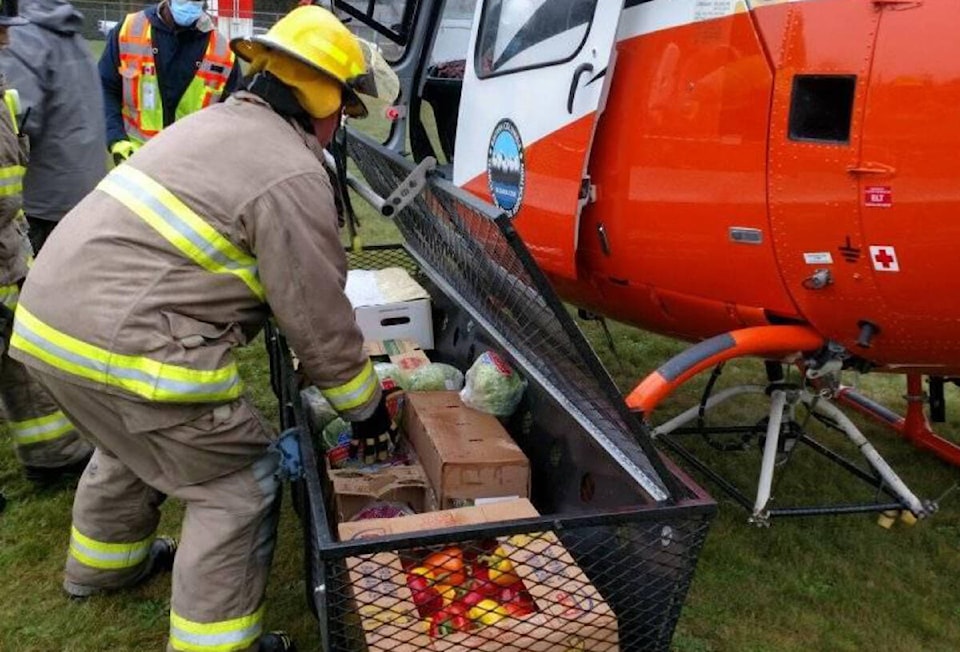A typical day in November at the Hope Airpark is pretty leisurely. They see an average of just two flights a day come through.
But last November was anything but typical, or leisurely.
With every road out of town blocked by walls of mud, the two options in the early days were the air and the river.
Within the first week, the little air park saw about 500 flights, showing the importance of the critical infrastructure for the town.
“It was chaos out there,” says Paul Levesque, an engineer who worked with Turbo Lift Helicopters out of Abbotsford at the time of the atmospheric river storms.
The company’s owner and president, Jeremy Prasad, sent out a group message to all his workers early that first morning, eager to help and calling for volunteers. Levesque was one of the first volunteers to arrive via helicopter, and flew in and out each day for the first three days. He spent his days helping to “move things around” at the air park and throughout town.
Being based out of the Abbotsford International Airport (YXX), the company was in the perfect position to help organize flights in and out of Hope. Those flights brought in supplies of every kind, from diapers to dog food.
At one point, he said, someone heard the milk was running out in Hope and showed up at YXX with 130 four-litre jugs.
“The whole thing caught everyone by surprise,” he said. “We were trying to figure things out on the fly.”
But over time, he said, all of the volunteers, airport workers, and the people donating and organizing on the ground on both ends, all found a way to meet the community’s growing needs as the days went on.
And there were two people he noted that really helped things run well. Firstly, he said, was the airport manager in Hope.
“He did really good job of keeping things together,” Levesque said. “Hats off to him.”
The Hope Airpark remained a busy hub much longer than the emergency itself. The Fraser Valley Regional District says it stayed busy right through January, as flood recovery efforts continued for some time.
In addition to the few dozen flights Turbo Lift organized, the airport was also a busy hub for the military, as soldiers were deployed throughout the Fraser Valley’s critical days. The flights included rescue operations and getting patients out of town, and bringing in doctors. There were plenty of other private operators flying in and out with supplies and people, and medical trips with Helijet crews.
“There were some really great companies that didn’t waste a moment,” he said, including Sierra Helicopters, for example.
He describes what it was like to be thrown into the emergency situation and then be a part of organizing the response.
“In the beginning when I first showed up, it was chaos. Nobody had any idea what was going on,” he said. “I was feeling a little defeated to be honest at one point. I was struggling to find sort of solid answers of what was needed and where they needed to go. I wasn’t getting a lot of answers.”
He said it didn’t seem like people were talking to each other. And then he met Victor Smith, who is now mayor.
“Once I connected with Victor that was the turning point in the whole process,” he said, when he started to see a solid plan in action. “I was watching the positive and interesting the changes happening day-to-day in Hope itself.”
Overall, he said, he saw the town of Hope make the best out of the worst.
“It was pretty amazing,” he said. “Obviously it was an unfortunate and unpleasant situation to have happen. I had an opportunity to help out where I could, and I was in a very privileged spot to be able to do that. We all felt pretty grateful to be able to do something.”
At the same time, many operators including Turbo Lift were flying in and out of Princeton and Boston Bar to help those cut-off communities as well.
Eventually the railway became a beacon of hope for those still stranded in town.
On Nov. 17, CN and VIA Rail were able to work together to move about 200 of the 1,200 stranded people out of town. The train made its stop right at the Sixth Avenue crossing, allowing people to board a passenger train back to Vancouver.
This was all coordinated with the help of Emergency Management BC, who reached out to CN to use their rails for this service.
CN reached out to VIA Rail in order to have a train to evacuate the stranded people in Hope.
“On behalf of everyone at VIA Rail and CN, we offer a heartfelt thank you to the employees who planned this operation and supported the evacuees who have gone through a very difficult time over the past few days,” CN said in a statement at the time. “We are truly proud to have been able to offer our assistance during this emergency.”
READ MORE: Coquihalla and Okanagan Connector on winter storm watch
@CHWKcommunity
jessica.peters@abbynews.com
Like us on Facebook and follow us on Twitter.


